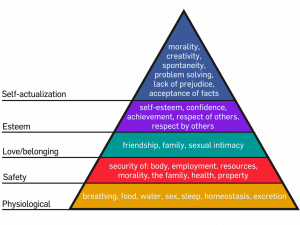Part Two: What Do We Belong To?
This part of the book will consider the various institutions, groups, clubs, etc., that we claim membership in: the things we belong to.
Belonging refers to the feeling of being accepted, valued, and included within a group, community, or society. It is a fundamental human need, deeply connected to our sense of identity and emotional well-being. The desire to belong with others, also known as belongingness, can take many forms such as the need to belong with a group of our peers at school, to be part of a team or club, to be included in a group at work, or to be part of a cultural or religious group. Feeling like you know your place and your tribe is a human trait: we need to align with and be accepted by members of a group.
Our sense of belonging includes:
1. Social Connection: Belonging is rooted in the relationships and bonds people form with others. It involves being part of a group where one’s presence is recognized and appreciated.
2. Inclusion and Acceptance: A sense of belonging arises when individuals feel accepted for who they are, without having to conform or change their identity to fit in.
3. Identity and Self-Worth: Belonging contributes to the development of a positive self-concept and self-esteem. Feeling valued by others reinforces an individual’s sense of worth and identity.
4. Community and Culture: Belonging is often tied to shared cultural practices, values, and traditions within a community. It can also be linked to participation in collective activities, rituals, or social institutions.
Belonging is essential for social cohesion, as it helps build trust, cooperation, and mutual support within communities and societies. It is a key factor in creating inclusive and harmonious social environments where all individuals feel recognized and valued. Feeling like we belong is more than just being acquainted with others. It depends on acceptance, approval, and attention from the group as well as providing the same to others.
At times, the need to belong can lead us to modify our behaviors, beliefs, and attitudes in order to conform norms of the desired group. We consider changing our appearance, and sometimes, we might even change our values in order to achieve the belonging we desperately crave.
What motivates us to seek our tribe? In many cases, the need to belong comes from sharing some point of commonality. For example, when we find those who like the same kind of clothing, style of music, and other interests might seek each other out to form friendships. Other factors that can lead individuals to seek out groups include:
- Cultural interests
- Religious beliefs
- Shared goals
- Work/career path
- Socioeconomic status
- Race/ethnicity
In Abraham Maslow’s hierarchy of needs, belongingness is part of one of his major needs that motivate human behavior. The hierarchy is usually portrayed as a pyramid, with more basic needs at the base (food, water, etc.) and more complex needs (morality, creativity, etc.) near the peak. The need for love and belonging lie at the center of the pyramid, part of the social needs of humans.

By belonging to a group, we feel as if we are a part of something bigger and more important than ourselves – this can help us find a greater sense of purpose for our lives. We may, for example, find a sense of belonging and purpose in our chosen career path or in having and raising a family. Sometimes we get to choose how we belong or what groups we belong to. Some of these choices are made for us. Understanding where we belong – and where we want to belong – is important to understanding something fundamental about our human experience.

